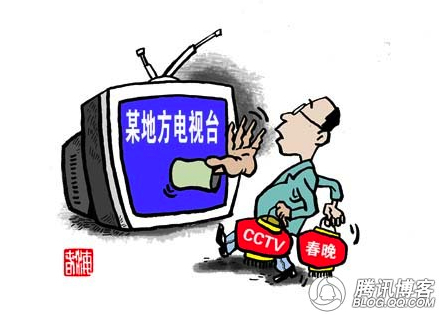In China this week, “fake news” is in the news. But given the confusion of China’s press environment, where controls and propaganda crisscross with the worst commercial appetites and the best professional impulses, it is often difficult to tell which articles are real “fake news”, which are officially sanctioned falsehoods, and which are fake “fake news,” branded as such by government officials who have an active interest in suppressing the truth.
The first story to talk about — almost certainly an authentic piece of “fake news” — was a popular news story in the Chongqing Evening News last week about the saga of Li Chunfeng (李春凤), a migrant worker in Zhejiang who reportedly drove a motorcycle 2,000 kilometers home to Chongqing after being seized with an irrepressible desire to see her six-year-old son. Seeing the story rising to the top at China’s leading online news site, QQ.com, we wrote on CMP Newswire last week that we suspected the story, which was drawing national attention and sympathy, was fake, and many Chinese journalists and readers have said the same since.
The Chongqing Evening News story seems to play wantonly on popular sympathies ahead of the Chinese New Year, when millions of Chinese struggle to find their way back home to reunite with their families against the world’s biggest transportation logjam, when train and bus tickets are virtually impossible to buy. It tells how Li Chunfeng dreamt one evening in Zhejiang that her boy’s body was covered in blood and under attack by rats, so she decided the next day to make the long journey home on a motorbike she had purchased with an advance from her boss, disguising herself as a man for the sake of safety on the long journey.
Li Chunfeng is the only source for this saccharine “news feature,” printed on a full page with two photos that look suspiciously posed, including one taken from the front as Li, with safety helmet on, rides a motorcycle with a look of heartfelt determination. The story is too much, too over the top, and too thin on real facts and sources — despite the fact that it is apparently a concerted effort by a “reporter”, a “correspondent” and an “intern,” all of whom are credited in the byline.
The story instantly found a warm-hearted following among Chinese Internet users, who gave Li Chunfeng the affectionate name “Motorcycle Mama” (摩托妈妈). But doubts about the authenticity of the story were voiced just as quickly, as reported in this China National Radio story. Some asked, for example, whether it was humanly possible for anyone to survive six days on half a bottle of water, as the news story claimed Li had.
Before long Xi’an’s commercial Huashang Bao (华商报) followed up on the story with Li Chunfeng herself and found that she was unable to confirm basic facts, such as exactly when she had set off on the journey and whether she had taken national roads or expressways. Li seemed able to recall only one or two specifics about the journey at all.
Writing at Southern Metropolis Daily today, well-known journalist and blogger Wu Yue San Ren (五岳散人) noted with good humor:
The story suspected of being fake news . . . told how a mother had driven her motorcycle 2,000 kilometers . . . and in her four days on the road slept only 6 hours and basically ate nothing. Of course, the greatest thing on earth is a mother’s love — but this greatness certainly doesn’t translate into superpowers. If this mother were truly a superhero, she would simply have flown home.
By some accounts, “fake news”, or xujia xinwen (虚假新闻), has plagued news media in China since at least the Cultural Revolution, at which time media fabricated news to suit the political purposes of the Gang of Four. Chinese government officials, however, deny definitions of the term that lump in state propaganda, and the allegation of “fake news” can often signal action against news seen to violate propaganda restrictions — news, in other words, that is too true.
Over the past twenty years, as economic reforms have moved rapidly ahead, the problem of “fake news” has certainly grown more serious. Many officials and academics point to the commercialization of media industry and intensified market competition as the root causes.
But what about propaganda itself? It is not “fake news” when state media run news stories quoting rescued mine workers declaring as they emerge to safety: “Glory be to the Communist Party, glory be to the government, and glory be to the people!”?
In a highly commercialized media environment subject to strict propaganda controls, media find it safer and more profitable to avoid real public interest stories in favor of pleasant, harmless and salable falsehoods. Control, therefore, has played a central role in undermining truth and credibility, and is the soil that nurtures “fake news.”
Relevant to the issue of state media and “fake news,” there has also been quite a bit of online chatter in China in recent days about remarks made by Deng Yaping (邓亚萍), a former ping-pong champion who is now deputy secretary of the Party’s official People’s Daily. Deng claimed in December that the official “mouthpiece” of China’s leadership has “never published fake news” in the past 62 years. But that claim rankles with many, who can cite endless cases of false, misleading or sloganeering coverage in recent months and years — not to mention in decades past.
Unfortunately, we also have this week an example of “fake news” being used as a tool of political control. We learn from Chinese-language reports by Deutsche Welle and Radio France International, since confirmed by numerous Chinese journalists and activists writing on Twitter, that Chengdu Commercial Daily reporter Long Can (龙灿) was dismissed on January 21 for “serious violations” and “false reports,” or baodao shishi (报道失实).
Sichuan-based blogger Song Shinan (宋石男) reported on Twitter that the Central Propaganda Department had ruled as “fake news” (假新闻) Long Can’s December investigation for Chengdu Commercial Daily into the rescue of 18 students from Shanghai’s Fudan University who had hiked into a rugged mountainous area near China’s scenic Huangshan, a rescue that led to the death of a police officer.
For much of December, popular anger in China focused on the Fudan University students. Many said their recklessness and insufficient preparation had put the local police rescue team in a dangerous position. Long’s report revealed that local police in Huangshan had ignored three emergency calls to “110” by student Shi Chengzu (施承祖) earlier in the day. Receiving no response from local authorities, the students contacted “Number Two Uncle” (二姨夫), a relative of one of the students many have speculated is an influential Shanghai official.
Once contact with “Number Two Uncle” was made, authorities in both Shanghai and Anhui sprang into action. The local mayor, propaganda chief and police chief of Huangshan all joined the rescue, according to Long’s report. By this time night was falling on Huangshan and conditions were treacherous, but Shanghai officials reportedly said that “rescue must be made whatever the cost.”
Deutsche Welle reported that China’s General Administration of Press and Publications (GAPP) subjected Long’s report to its own investigation under pressure from the Central Propaganda Department and unspecified official pressure in Shanghai (“Number Two Uncle”?). GAPP then meted out the following punishment for Chengdu Commercial Daily:
1. journalist Long Can to be dismissed; 2. editor Zhang Feng (张丰) to be fined 1,000 yuan; 3. executive editor Xu Jian (徐剑) to be dismissed; 4. head of the news desk, Zeng Xi (曾熙), to be dismissed; 5. Zhang Quanhong (泉洪), editorial board member in charge of the news desk, to be suspended from duties and subjected to severe examination; 6. editorial board member on duty that day, Wang Qi (王奇), to be fined 3,000 yuan; 7. chief editor Chen Shuping (陈舒平) to be fined 3,000 yuan.
Speaking to Deutsche Welle, Long Can upheld the truth of his report, and voiced his deep anger and frustration at the actions taken against him and his paper:
My situation right now is really difficult. I’ve been a journalist for 10 years. I’ve never accepted a red envelope [in payment for or against news coverage]. What we make can’t be considered an enviable wage. We keep to our original journalism ideals through the years, and those “ideals” are what we lean on as we plod ahead. Being a journalist has always been cruel and difficult. We always hope for even the simplest measure of care, even the merest regard for our ideals, but these have never in fact been granted — not in terms newspapers themselves or the larger media environment. As journalists we bear all of the risks and pressure. But then we find at the critical moment that we’re “cast as failures” (被失败者). What I most want to say is that if all journalists within a news media are silent, this can only cause more journalists to face the danger of being expelled . . . and within the world, if all the people in a country keep silent, it will be like Iran or North Korea. Is there meaning in that? Silence takes away all meaning. Before I worked hard to ensure that I kept my cool. But this time I’m furious. I feel I’ve lost hope for “journalism.”
Over the last several days, scores of leading journalists and activists in China have discussed the Long Can case, and shared his investigative report, through Twitter and domestic microblog services. Earlier this week, Long Can shared the full text of his investigative report online, inviting scrutiny from fellow professionals: “This is my original draft, with not a word removed. I hope everyone will offer their criticism and analysis from the standpoint of [professional] news writing. I’ll accept them all. Thank you. As to whether my report can be called fake news, everyone can come to their own conclusions in their hearts.”
Long Can’s microblog post was shared by likes of CMP fellow and top Chinese investigative reporter Wang Keqin (王克勤).
Shen Yachuan (沈亚川), a veteran journalist and reporter for Southern Weekend who often writes under his online alias Shi Feike (石扉客), sent Chinese microblog users to a link outside China’s firewall, where they could find the reports on Long Can’s dismissal by journalist Cao Guoxing (曹国星) at Radio France International: “They are of the best possible quality. I encourage everyone to scale the wall and read them,” Shen said.
According to the RFI report in question, Shanghai police criticized Long Can’s investigative report on the Huangshan rescue, saying they had never received a report from a “so-called influential person” related to the trapped hikers.
Speculation as to the possible identity of Shanghai’s “Number Two Uncle” is one of many questions that remain unanswered in the dismissal of journalist Long Can.
Now, clearly, the specific issues with Long’s report for Chengdu Commercial Daily and the reasons why he and others have suffered as a result are not open for discussion in China. Long’s career as a professional journalist is almost certainly over, and a tragedy that is all too real hides behind an unsupported accusation of “fake news.”








